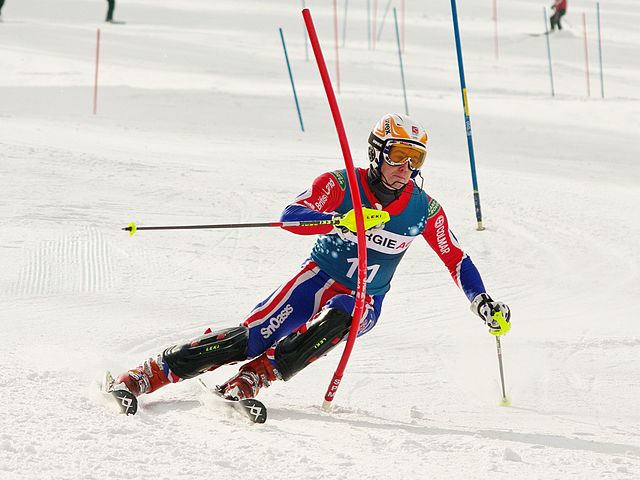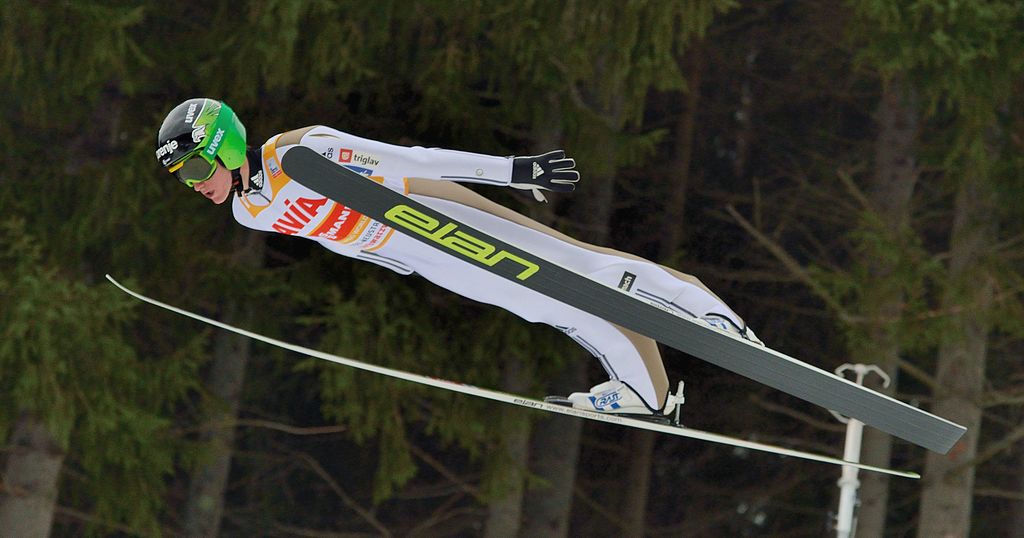English Across the Curriculum
Skiing
Competitions
Ever since people started to ski there have been contests to find out who could ski fastest, jump farthest or run fastest on skis. Competitions are organized by the International Ski Federation (FIS). It holds World Championships every two years and skiing events are a very important part of the Olympic Games every four years. In addition, World Cups are held every year.

FIS World Ski Championships 2017 in St. Moritz, Switzerland
Image: Cutkiller2018, CC BY-SA 4.0,
via Wikimedia Commons
Alpine Events
The slalom is a race in which a skier skis through about 50 gates. They are placed so that a skier must make many quick turns. The times of two runs are added together. In the giant slalom the gates are farther apart and the turns are smoother.Racers must be able to accelerate very well and should never lose their rhythm.
Super G and downhill are the so-called speed events. The Super G is a mixture between the downhill and the giant slalom. It is the youngest of the Alpine events. The downhill is the most dangerous of all skiing events. A skier descends a course of about 3 to 5 km as fast as possible. They must pass through control gates that are set up to keep them from dangerous areas and to make them slow down. Downhill skiers often reach speeds of up to 130 km an hour. Both Super G and downhill races only have one run.

David Ryding (U.K.) on a slalom course
Image : Christian Jansky, CC BY-SA 3.0, via Wikimedia Commons
Nordic Events
Nordic competition consists of four events.
Cross country races are held on courses with hilly and flat parts. They can have various lengths of up to 50 km. In relay races four athletes form a national team and cover the same distance one after the other. The men’s relay is 40 km long, the women’s relay 20 km long.
Jumping competitions take place on hills of various heights. Jumpers slide down a snow covered track, take off at the end, fly through the air and land on a specially built landing hill. You get points for each jump depending on how far you jump. Your flying and landing style are also judged.
In the Nordic combined athletes have to make ski jumps and then race over a cross-country track . They receive points for each event.
In the biathlon an athlete must combine cross-country skiing with shooting skills. Participants ski over a course on which targets are set up at different points. Skiers must shoot at the targets from a standing and lying down position. For every miss you must ski a penalty round. In the biathlon relay four skiers race 7.5 km each.

Standing position at the shooting range in a biathlon World Cup event
via Wikimedia Commons

